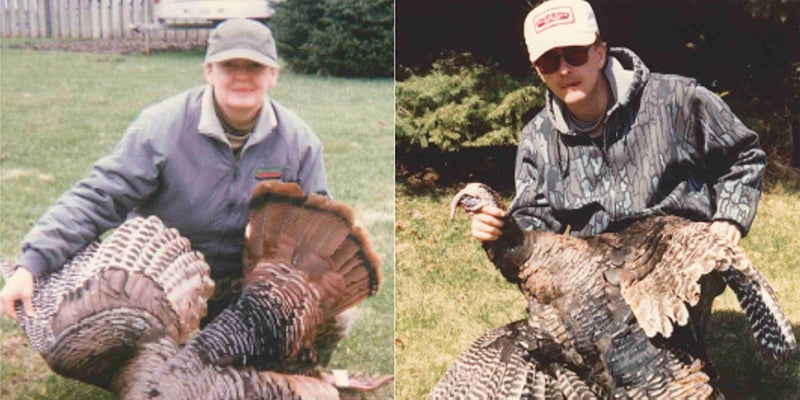Nature Notes: Into the wild with the turkeys
Published 6:03 pm Tuesday, October 25, 2022

- Photo provided
|
Getting your Trinity Audio player ready...
|
By Julie Champlin
Naturalist/Office Manager
When my husband Duane Champlin and I were dating (40 plus years ago) he introduced me to the hunting world. Hunting offers a kinship with wildlife, wild places and each other. We hunted turkeys together for many years.
A day spent in the woods is precious. Walking out to your stand in the pitch black of the morning and witnessing the sights and the sounds of the forest awakening is worth the early morning rise. We have created memories that will last a lifetime that not only include taking the turkey, but some interesting encounters with other animals that inhabit the forest. I had hunted ducks and pheasants, but not turkeys. Duane introduced me to their world in the beautiful bluff lands of southeastern Minnesota in the 1980s.
John James Audubon described the wild turkey as “one of the most interesting birds indigenous to the United States of America.” Duane and I quite agree. Turkeys are intelligent and sensitive animals that are highly social. They create lasting social bonds with each other and are very affectionate; rather similar to dogs. They are large birds with over 5,500 feathers and 18 tail feathers that make up their fan. They roost overnight in trees and they make a lot of noise going to roost and coming down from the roost in the morning. When we scouted for the hunt we searched for scat.
Duane showed me that a turkey’s gender can be determined from it’s dropping. A male’s will be shaped like a letter J, a female’s more spiral shaped. Wild turkeys can fly up to 60 miles per hour, have excellent vision, seeing three times more clearly than 20/20. They can also see in color and have a 270 degree of vision.
A wild turkey’s hearing is remarkable. It is not so much their ability to hear, but how they use it. They have an uncanny ability not only to hear sounds from great distances, but to pinpoint the exact location of their source. It is critical to remain still during the hunt as the turkey can see and hear extremely well. Turkeys are known to exhibit over 20 distinct vocalizations including a distinctive gobble, produced by males, which can be heard a mile away. Individual turkeys have unique voices. This is how turkeys recognize each other.
I use a box call and Duane uses a mouth call to lure the male turkey into our sights and female decoy. We make female clucking, purring, yelping and cackle sounds. Duane is far better at making these sounds than I am. It is an amazing experience to watch the male turkey puff up their bodies, strut and spread their elaborate feathers, like peacocks, to attract a mate. When the male turkey is excited to mate the bare skin on the turkey’s throat and head can turn red, white or blue.
The long red fleshy object over a male’s beak is called a snood. They can easily defend themselves with their powerful feet and spurs. I prefer domesticated turkey meat, especially for the upcoming Thanksgiving dinner, but wild turkey stew can be delicious if seasoned well and cooked along with vegetables in a slow cooker. We always harvested the meat from our birds and shared it with family and friends.
The hunting experience is therapeutic for both of us. It truly connects us with nature. We enjoy the physical and mental challenges of the hunt and the connection with family and friends often times more than the act of taking the game. Taking the game is the icing on the cake. As affirmed by Randall Eaton in his book “Why We Hunt.” Hunting is how we fall in love with nature.”
November at the Nature Center
Nov. 5-6: DNR conducting CWD Testing, Nature Center Shop/Garage
Nov. 9: Live Bird Program, 4-4:30 p.m.
Nov. 11: Interpretive Center Closed
Nov. 15: Audubon Program, 7-8 p.m.
Nov. 17: Give to the Max Day—Online
Nov. 24-25: Interpretive Center Closed
Nov. 29: Christmas Crafts class. Session 1, $35 per person, 6-8 p.m.
Nov. 30: Christmas Crafts Class. Session 2, $35 per person, 1-3 p.m.


